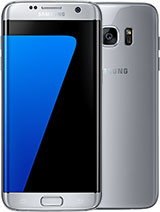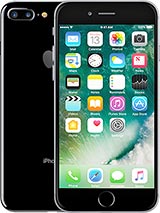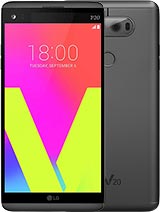Google Pixel XL review: Upsampled
Upsampled
Final words
The Google Pixel phones launched to great acclaim while our reaction is more tempered. It's not about the quality of Google's (and HTC's) work, it's about the desirability of the phone.
You definitely want this if you use the camera on your phone a lot. The Google Pixel XL is among the best and it probably is the best when it comes to low-light photography thanks to the HDR+ mode. Also, two years of guaranteed OS updates (and longer for security patches) is better than any current Android (still not on par with the iPhone, though).
Even when we shake off the Nexus mindset, the Google-themed software still feels like a manufacturer skin. The company has a ton of messaging apps, most of them left by the wayside. Google Photos seems to be going strong, but that rose from the ashes of Google+ and it's present on every other phone out there. The company has trouble with long-term commitment and we can't help but wonder if any of the apps that are at the heart of the Pixel will be left out in the cold when the Google team gets a shiny new toy.
We also didn't understand why some native Android features were missing - no themes, no data saver, no quick re-install. It took Android ages to catch up to the features of custom manufacturer skins and even now Google holds it back.
Google Pixel XL key test findings
- Excellent build quality of a phone with questionable aesthetics. The glass window on the back is the biggest point of contention - we don't like how it looks (or that it sticks out slightly above the metal) and we wonder what it's for when there are still antenna lines and no wireless charging
- The display is dimmer than Super AMOLED, but its sunlight legibility remains excellent; Color accuracy could have been better, though (sRGB mode fixes it partially, but phones in this price range are talking of HDR and wide color gamut, beyond sRGB)
- The battery life is an improvement over the Nexus 6P, though even with a relatively big battery if failed to keep up with the market leaders
- Android has the best digital assistant hands down and the Photos app is amazing; other phones run the same Google apps, though, even the iPhone has Photos, so it's not a unique feature
- The Snapdragon 821 AB is fast - very fast - but not faster than older phones with Snapdragon 820
- Audio quality shows some distortion when headphones are plugged in and the volume is average. Excellent quality with an external amp, though. The loudspeaker scored a rare Excellent mark
- HDR+ elevates this camera above the competition - Auto gets the job done most of the time, but for the most challenging shots we switched from Auto to On, which surprisingly made a difference. The selfie camera is amazing too, again helped by the HDR+ mode
- Superb video quality at 2160p @ 30fps and a wide selection of other resolutions and framerates. The 1080p @ 30fps mode does great as well, 60fps videos are smoother though a bit less detailed
We do love the new split-screen multitasking and Quick switch. They aren't entirely new to the smartphone world, but as official Android features they will get wider app support. The seamless OS update functionality sounds great too, especially with guaranteed quick updates.
The Google apps are among the best in the biz too. The Assistant is the smartest yet, more reliable and capable than Siri. Integrating it into Allo is a clever way to get people more comfortable talking to a computer. Photos has AI features that enable amazing search and automatically edit your photos. Play Music is competitive with Spotify and Apple Music too.
All that's great, but this software can be brought to any other Android phone (in fact, those apps are mandatory). The hardware is the exclusive and Google priced it high - too high perhaps. And the price is hard to justify when the Pixel XL doesn't have the biggest, brightest screen, the fastest chipset, the best battery life, the best speakers, and the best water resistance.
It has the best camera, though, we'd give it that, and also the best Android software support too so perhaps that should suffice.
The Samsung Galaxy S7 edge has to shoulder the weight meant for the Note7, but is a fine competitor for the Pixel XL. Its dual-curved screen is brighter and more accurate (and has Always on functionality). Also, the phone has proper water resistance (IP68 vs. IP53). The chipset is essentially as fast, the storage is upgradeable. The camera is very good and the Dual Pixel autofocus is impressively fast.
Samsung may be running an older version of the OS, but it pioneered many of the features now adorning the Pixel - including the split screen multitasking (Samsung's is still more advanced).
Even conservative Apple put out a more feature-rich phone - the iPhone 7 Plus. It jumped on the dual-camera craze (providing arguably the best implementation of the digital zoom/bokeh variant). And as we saw in the benchmarks, the Apple-made chipset wipes the floor with the Snapdragon competition.
The other Pixel XL major competitor, the iPhone 7 Plus, is not more expensive than the Pixel XL either (and this is a rare thing to say). But you do get an even longer software support - the 4-year old iPhone 5 got iOS 10 this year! A wide color gamut screen, waterproofing and stereo speakers are now part of the iPhone experience too.
With no Note7, the LG V20 gets to call itself "the power user's phablet." Its sleek metal body is rugged (shockproof to a military standard) and houses two or more of most things - two cameras on the back, virtually two on the front too, quad-DACs and the crowning moment - the secondary screen.
It enables a different mode of multitasking, where you tap on app icons like you do on a desktop. This screen is always on too, much more informative than the Ambient display of the Pixel XL. And the LG V20 has a more complete implementation of Nougat's features.
While LG's modular phone attempt floundered, the Motorola Moto Z Force represents a different take. At least it launches with a wider selection of add-ons, which are more usable to boot (the G5 got only two of questionable value). If not for functionality, the Style Shells are a great way to change the look of your phone.
Even without modules, the Moto Z Force is a very capable droid. It has a 5.5" QHD AMOLED screen with better color accuracy, with Moto Display (Pixel's Ambient display was developed at Motorola). While it's powered by Snapdragon 820, not 821, the Z proved faster in benchmarks too. It helps that it runs near-stock Android with some Moto enhancements sprinkled on. The 21MP OIS-enabled camera is a proficient shooter too.
By the way, if you can't find a Z Force in your region, you'll have to settle for the regular Moto Z. It's mostly the same, but it has a lower resolution cam (13MP + OIS) and a smaller battery.
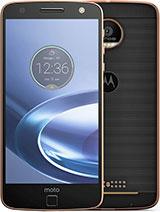
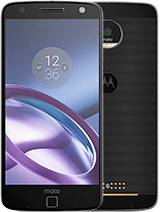
Motorola Moto Z Force • Motorola Moto Z
Google's primary market is North America - okay, the US really, Canada and Western Europe get lucky (well, not in terms of pricing). This means a Pixel XL will never be in the same room as many excellent phones from Chinese companies. But some target the US specifically.
ZTE Axon was among the first and the Axon 7 is basically half the price of the Pixel. You still get a 5.5" QHD AMOLED screen, Snapdragon 820 (Nougat is on the way), the camera has a 20MP sensor with OIS and the stereo speakers are very impressive.
BlackBerry borrowed the TCL 950 hardware to create the DTEK60. It's more expensive than the Axon 7 but still cheaper than the Pixel XL. It too has a 5.5" QHD AMOLED screen, stereo speakers around it and a Snapdragon 820 inside. The 21MP camera lacks OIS, but then so does Pixel's. The Android 6.0 Marshmallow has been imbued with BlackBerry corporate magic, a boon for the security conscious.
The LeEco Le Pro3 is a newcomer, exclusive to the US. At the same price as the Axon 7 (less after a $100 rebate) it brings a proper Snapdragon 821, stereo speakers and a larger battery (4,070mAh). The 5.5" LCD screen has 1080p resolution, which isn't as impressive and there's no microSD slot. Not that potential Pixel buyers expected anything different.
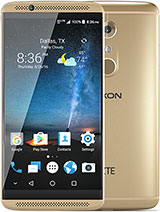
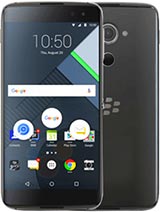
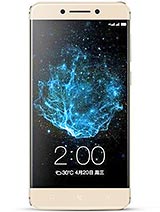
ZTE Axon 7 • BlackBerry DTEK60 • LeEco Le Pro3
Nexus phones were outside the usual Android rat race, but now the Pixels have to and want to run alongside all flagship smartphones, and that includes even the iPhones, which are a clear target. We loved the camera on the Google Pixel XL and were satisfied with the build quality and software package. However, we're not convinced that Google built the definitive smartphone and yet the search giant priced it as such. This fact, along with the minimum availability through the traditional carrier channels, is bound to limit the Pixels market success.
Reader comments
- champ
- 19 Oct 2022
- t0L
does anyone know where to buy a pixel xl in 2022?
- Brnhwlnd32
- 10 Jul 2021
- IbG
Loyal and fanatic Pixel and iphone user here. I am currently going through the entire line of pixels. Typing this on a Pixel XL. I found one new in the box on ebay. Ok. It runs hot. Other than the speed and panel it can't hold a candle to the ip...
- Anonymous
- 25 Feb 2021
- X$r
Right absolutely
